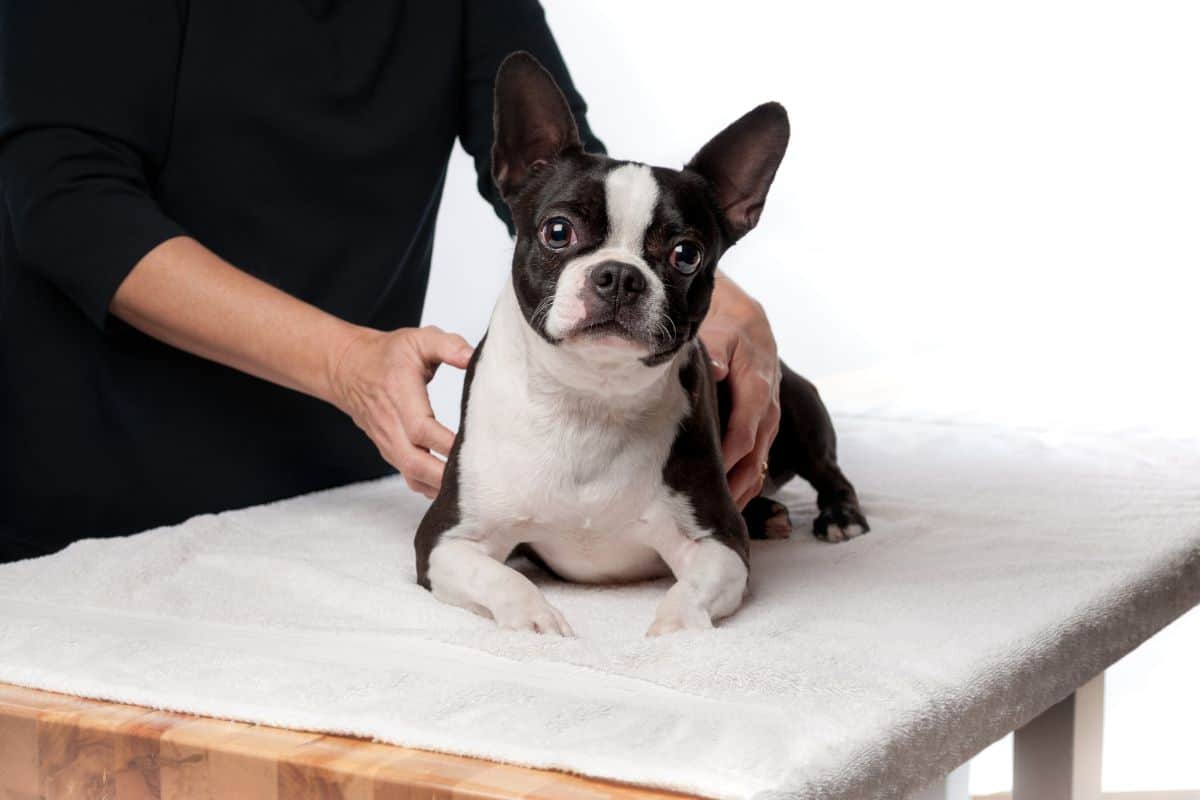Dog Massage: A Holistic Approach to Your Canine’s Health

Unearth the wonders of dog massage—a holistic tool to boost your furry friend's overall health and wellness.
Understanding the Benefits of Dog Massage
Every pet parent's primary aim is to ensure their dog's optimal health and happiness. One increasingly popular way of accomplishing this is through dog massage therapy. A gentle yet effective method, dog massage offers a plethora of benefits for your four-legged companions.
- Dog massage has been proven to be highly effective in easing anxiety. Many dogs experience anxiety due to various reasons, including separation, changes in environment, or past traumas. A well-administered massage can help reduce these anxiety levels by promoting relaxation and releasing tension in the muscles.
- As our loyal companions age, they may develop arthritis. The pain and stiffness associated with this condition can greatly hinder their quality of life. Dog massage can help alleviate these symptoms by improving joint mobility and increasing circulation to the affected areas.
- Dogs can also suffer from digestive issues like constipation or an upset stomach. By massaging specific areas on your dog's body, you can stimulate their digestive system and assist in alleviating such discomforts.
- If your dog has had an unfortunate incident leading to a slipped disc, torn ACL, or hip dysplasia, massage therapy can play a significant role in their recovery process. It can help improve their range of motion, promote healing, and reduce pain and inflammation.
Techniques in Canine Massage Therapy
Canine massage is an umbrella term for a multitude of techniques. These range from Swedish Massage, known for its long, flowing strokes and muscle kneading, to Myofascial Release, a technique that targets the connective tissue covering the muscles.
Positional Release is another modality that involves putting the dog's body in comfortable positions to encourage muscle relaxation. Meanwhile, Reflexology focuses on pressure points in the paws and ears that correspond to different body systems.
Watsu, a form of water therapy, is an excellent technique for dogs with severe joint issues, while Trigger Point Therapy targets specific pain points for immediate relief. Other methods like Orthobionomy and various Osteopathic techniques can realign the body and promote self-healing. Lastly, Acupressure uses pressure on specific points to stimulate the body's natural healing abilities.
How To Perform A Dog Massage at Home
Before you start massaging your dog at home, it's vital to have a basic understanding of dog anatomy, to understand how to recognize stress in your dog, and to create a calm and comforting environment. Without these things, you may find it hard to keep your dog relaxed and provide the full benefit of the experience.
Understanding Dog Anatomy
It’s crucial to have a basic understanding of their anatomy. Dogs, much like humans, have intricate systems of bones, muscles, and tissues. Understanding these systems can significantly enhance the effectiveness of your massage and minimize the risk of accidental injury. For instance, knowing where the dog’s spine, muscle groups, and joints are will help you apply pressure correctly. A gentle touch in the right areas can provide immense relief and relaxation to your canine buddy.
Recognizing the Signs of Stress in Dogs
The next step is to recognize when your dog might need a massage. Dogs, too, experience stress, which can manifest in various ways, both physical and behavioral. Physical signs include excessive shedding, changes in appetite, and digestive issues. Behavioral signs, on the other hand, might include pacing, unusual aggression, or noticeable changes in sleep patterns. By identifying these signs, you can use massage as a tool to alleviate stress and improve your dog’s overall wellbeing.
Preparation for the Massage
Preparing for the massage is just as important as the massage itself. Start by finding a calm and quiet environment. This will help your dog relax, making the massage more effective. Next, choose a time when your dog is already relaxed, like after a meal or before bed. You’ll also need to ensure your dog is comfortable with touch. If your dog is touch-averse, it might be beneficial to gradually introduce them to the idea of being touched, particularly in sensitive areas.
Basics of Dog Massage
Now, onto the fun part—massaging your dog. There are a few basic techniques to master: effleurage, petrissage, circular friction, and compression. Effleurage involves long strokes along the body, which help to relax the muscles and promote blood flow. Petrissage involves kneading the muscles to relieve tension and enhance relaxation. Circular friction involves small, circular motions with your fingers or hands. Finally, compression involves pressing the muscle against the bone to increase blood flow and relieve tension. Remember to always use gentle, but firm pressure. Read your dog's responses—if they seem relaxed, you're doing a good job. If they seem uncomfortable, lighten the pressure or move to a different area.
Specific Massage Techniques for Various Area
Every part of your dog’s body can benefit from a massage, but different areas require different techniques.
- Starting with the neck and shoulders, use circular motions and long strokes to relieve tension.
- For the back and spine, place your hands on either side of the spine and move them along the length of your dog's body. Avoid pressing directly on the spine.
- When massaging the legs and paws, be gentle and attentive. These areas are sensitive and require a lighter touch
- The belly and chest can be massaged using long, sweeping strokes. This can be incredibly soothing for your dog, especially if they are stressed or anxious.
Massages for Specific Health Issues
Massage can also help manage specific health issues.
- For dogs with arthritis and joint pain, gentle pressure around the affected joints can help alleviate discomfort.
- If your dog suffers from anxiety or stress, a full-body massage can have a calming effect.
- For improving circulation, focus on long strokes towards the heart.
- For recovery from injury, however, it's best to consult with a vet before starting a massage routine.
Safety and Precautions
As with any form of physical therapy, there are safety precautions to consider.
- There are times when a massage might not be appropriate—for example, if your dog has a fever, an infection, or a recent injury.
- Remember that not all dogs will enjoy a massage. Look out for signs of discomfort or distress, such as pulling away, growling, or stiffening of the body.
- It’s always a good idea to consult your vet before starting a new massage routine, especially if your dog has a chronic illness or injury.
Professional Canine Massage Therapy
While home massages are beneficial, some situations may require the expertise of a professional canine massage therapist. Complex conditions like a slipped disc, severe arthritis, or post-operative care necessitate the precise techniques and knowledge that only a professional can provide.
Professional therapists have gone through extensive canine massage courses and earned their canine massage certification, equipping them with the skills and understanding needed to provide the best care for your furry friend.
Canine Massage Certification and Courses
Learning from professionals is paramount if you wish to provide the best care for your pet. Institutions like Canis Bodyworks offer comprehensive dog massage courses that cover all the techniques mentioned above and provide a solid foundation for anyone interested in gaining a canine massage certification.
Certification ensures you're equipped with the necessary skills and knowledge to safely and effectively massage your dog or even start your own dog massage therapy business. The benefits of these courses are manifold, for both you and your four-legged companions.
Dog massage therapy offers an avenue for pet owners to bond with their pets and provide them with a natural, holistic form of healthcare. It's a powerful tool that promotes relaxation, alleviates pain, and improves overall wellbeing. Whether you learn the basics for home use or pursue a certification for professional application, the benefits of dog massage are certainly worth exploring.
Frequently Asked Questions
Dog massage can indeed help with behavioral issues. The relaxation it provides can reduce stress-related behaviors and promote positive interaction.
The frequency of dog massage varies depending on your dog's needs. For general wellness, once a week can suffice. For specific health issues, more frequent sessions might be needed.
If done correctly, there are minimal risks associated with dog massage. However, it's essential to understand your dog's health condition and consult with a vet when necessary.
Signs of discomfort include whimpering, twitching, or trying to move away. Always ensure your dog is comfortable during the session.
All breeds can benefit from massage therapy. However, the approach might differ based on the dog's size and specific health conditions.
Massage can help dogs with chronic illnesses by relieving symptoms, improving comfort, and enhancing their overall quality of life.
Certified dog massage therapists can be found through professional associations or reputable institutions like Canis Bodyworks.
If your dog seems relaxed, leans into your touch, or falls asleep, it's a good sign they are enjoying the massage.
If your dog has a negative reaction to a technique, stop immediately. Consult with a certified therapist or vet to understand the issue.
Massage tools like brushes or textured balls can be used. However, your hands are the best tool for a personalized massage.
While some principles are similar, human massage techniques should be adapted to suit the unique anatomy and needs of dogs.
Massage complements veterinary care but doesn't replace it. Always consult with your vet for serious health concerns.
 Author - Joseph Schifano
Author - Joseph Schifano
Joseph Schifano is the owner and President of The Academy of Pet Careers. With over 20 years of experience working in the pet field, managing large scale pet care businesses, he has experience in every facet of the industry. Joseph's focus is primarily on the business of pet care but his passion is in understanding animal behavior how a dog's brain works so we can improve the care we provide as pet professionals. He is a huge advocate for Pet Empowerment and Force Free training methods. Read more in Joseph's full bio.
